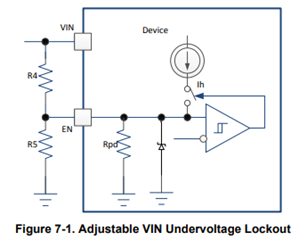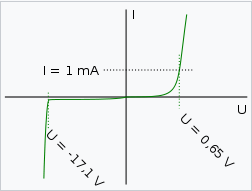Hi team,
Customer is trying to tie DC24Vinput to EN-pin via 510kOhm as the attached. Could you confirm this is OK? The abs max of EN pin is 7V, it seems it is banned to apply 24V to EN-pin. But 7.3.5 Device Enable mentions that it is OK. How should we understand this?
Regards,
Noriyuki Takahashi




